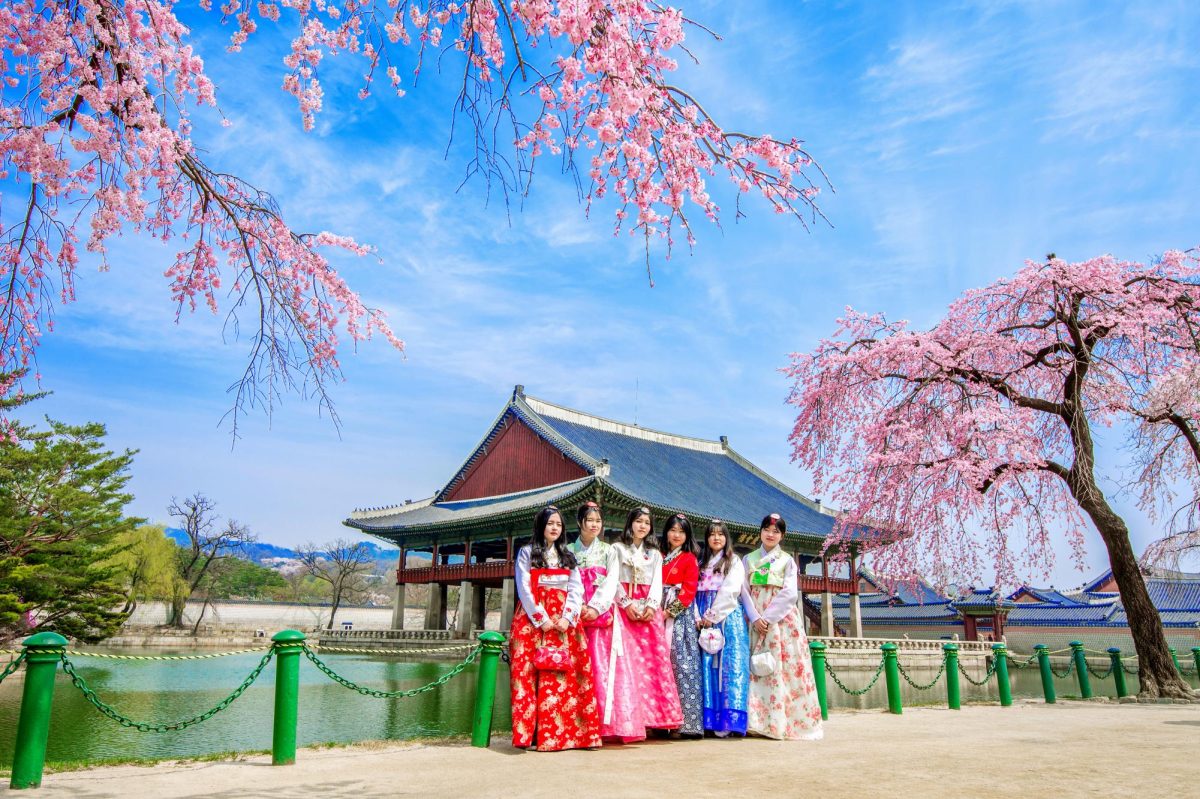When many people think of Korea, the first thing that comes to their mind is Korean (K)-pop. Sure, K-pop has positively impacted perceptions of Korea globally, but there are also thousands of other factors and cultures that shape Korea into the country it is today.
By closely studying the diverse and interesting aspects of Korea’s history and culture beyond K-pop, we can better learn what makes up the beautiful country of Korea.
The hanbok, for example, is the traditional piece of clothing worn in Korea back in 57 BC to 668 AD. Although it is not worn today on an everyday basis, many Koreans still put on a hanbok during special occasions and holidays to celebrate their origins and religion.
The hanbok is a very important part of Korean culture and identity, and anyone visiting Korea must rent a hanbok out in order to actually experience Korea and its culture.
Visitors can even wear a hanbok by renting one out at the Gyeongbok Palace in Seoul, one of the most famous key landmarks in Korea. People can book tours, or tour the palace on their own. Seeing the history of Korea in person really impacts our understanding of Korea back then.
Another very important aspect of Korea is its most well known dish: Kimchi. The fermented cabbage and radish pieces and covered in chili pepper represent the Korean culinary traditions and cooking.
Kimchi is the base of how many other Korean dishes are made, which is by fermenting them. By trying kimchi, we can get a better taste of Korea.
Aside from traditional arts and food, Korea’s language and literature also makes up a huge part of the culture in Korea. “Hangul” is the Korean alphabet created in the 15th century.
Foreigners may think of this as just the language of Korea, but to Koreans, it’s so much more.
Hangul represents Korea’s independence in culture and their intellectual achievements. It also is known to be easy to learn.
Korea also holds annual traditional festivals. For example, Chuseok is the celebration of the harvest festival and Seollal is the celebration of Lunar New Year.
These festivals are unique to Korea and emphasize the importance of family and community by remembering customs that have been passed down by ancestors.
In terms of music, there is another type of music that originates from Korea that is not K-pop. This is the traditional Korean music called Gugak.
In Gugak, music genres are split into ritual music, folk music, and court music. Additionally, this traditional music also emphasizes instruments like the gayageum, a zither string instrument, and the janggu, a hourglass shaped drum.
Most people would think of K-pop as the only type of music produced in Korea.
It is really important to recognize these traditional music aspects of Korea to really understand and see how they have evolved over time.
These small but impactful traditions and cultures can be overlooked at times, but they’re really important to Koreans and their culture. Understanding these cultures are crucial to be able to fully appreciate Korean identity.

